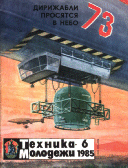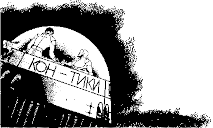Elektronika MK-61/52 and 152/161: small tech review (En)
Background
This short article speaks about calculators Electronica MK-52 and MK-61 and new MK-152/161 models of programmable controllers which able also act as keystroke programming calculator. Since 2007, there were only two English articles about MK-152 (1, 2) with pictures but without some tests and technical information.

New models are compatible with old programmable calculators MK-61, MK-52. The popularity of these Soviet mass-market calculators based on strong support in media such as "Nauka i zhizn" ("Science and Life"),"Technika molodyozhi" ("Technique for youth") and many other. For example, in 1985 Soviet science fiction writer Mikhail Puhov (1944-1995) wrote a novel "Returning to the Earth" and illustrated with a set of simple programs, step-by-step space simulators for Soviet programmable calculators, that were written by author and checked by Soviet cosmonaut U. N. Glazkov (flight engineer of Salyut 5).
For non-Russian readers there are some useful links explaining how to work with MK-61 including translation of keyboard symbols. Many thanks to Gregory Escov's site.
- The description of MK-61 keyboard. Here I describe all the keys on MK-61 keyboard (other keyboards are very much like this one), and what those keys do in combination with other keys. If you actually intend to try anything described in other articles, you should probably read this one, for it gives all the "ASCII" names for MK buttons.
- Pseudo-writing mode. I already wrote one article about Soviet programmable calculators. This one tells about a strange mode you can get them in, "pseudo-writing mode".
- A journey of big numbers (uncompleted). This article will tell you about the various "big numbers" that you can get on your MK54-compatible calculators - that is, the numbers that can not be displayed properly and, according to documentation, can not even exist. But, as you see, there's quite a lot of stuff you can do with bignums...
Tech Side
MK-152/161 is not a clone of those 20-year old calcs, but small programmable controllers used the same keystroke based entry language. They have about 100 times more memory and about 1000 times faster according to "8 queen" test. The small screen can display digits, Russian and English letters, a set of special characters and monochrome computer graphics. Keyboard is almost the same excluding a new prefix key "P", four directional keys and two menu keys (Enter and Escape).
Instruction set was expanded to deal with larger memory and to control I/O port(s). On-board programming service was partially improved: one can see not only instruction code (in hex), but also instruction mnemonics. Unfortunately, no mnemonic labels are provided for on-board programming and you may really need a computer with cross-compiler to write programs below the limit of 100-200 steps.
The entry language uses reverse-polish notation and resembles the language of HP-12/HP-15.
Manufacturer provides a cross-compiler for PC (Windows) that can help:
- to write programs in English notation (you can use labels)
- to compile them into hexadecimal bytecode
- to transfer programs to and from device via RS-232
The table below compare devices with the last Soviet model, MK-52. See also MK-52 and MK-161 pages on RSkey.org.
| МК-52 (MK-52) | МК-152 (MK-152) | МК-161 (MK-161) | |
|---|---|---|---|
| Number of decimal digits, displayed (total) |
8 (8) + 2 | 8 (14) + 2 | 8 (14) + 2 |
| Number of basic commands | 229 | 242 | 242 |
| Instruction length | 1 or 2 steps | 1, 2 or 3 steps | 1, 2 or 3 steps |
| Instruction mnemonics | Russian | Russian, English | Russian, English |
| Address modes | register, indirect, indirect-autoincrement, indirect-autodecrement |
register, direct, indirect, indirect-autoincrement, indirect-autodecrement |
register, direct, indirect, indirect-autoincrement, indirect-autodecrement |
| Number and size of stack registers | 4+1, 8+2 digits | 4+1, 14+2 digits | 4+1, 14+2 digits |
| Number and size of decimal registers | 15, 8+2 digits | 1000, 12+2 digits | 1000, 12+2 digits |
| Number of byte registers | No | 7168 | 7168 |
| Electronic notebook capacity | No | 65 Kb, 12+2 digits | 65 Kb, 12+2 digits |
| Electronic disk capacity | 512 steps | 512 Kb | 512 Kb |
| File system | No | Proprietary | Proprietary |
| External disk support | Read-only (ROM) | Read/write | Read/write |
| Maximum program length | 105 steps | 10000 steps | 10000 steps |
| Procedure stack size | 4 | 64 | 64 |
| Display resolution | 12 digits, green vacuum fluorescent display | 128x64 dots, monochrome LCD | 128x64 dots, monochrome LCD |
| Serial interface | No | RS-232C compatible | RS-232C compatible, SPI |
| Parallel interface | No | Centronics, EPP, Static | Static |
| Proprietary interface | Yes, not documented | Yes, documented | Yes, documented |
| Other interfaces | No | No | A/D |
| Paperback manual | Included, Russian | Included, Russian | Included, Russian |
| Communication software | No | Downloadable for free, for Windows and wine | Downloadable for free, for Windows and wine |
| Cross-compiler, decompiler and other developer tools | No | Downloadable for free with source code, for Windows and GNU/Linux |
Downloadable for free with source code, for Windows and GNU/Linux |
| CPU model | К745ИК13 chipset (original) | W77LE516 (MCS-51 series) | W77LE516 (MCS-51 series) |
| CPU frequency | 455 KHz | 22 MHz | 22 MHz |
| Internal bus width, bits | 1 bit (serial) | 8 bit | 8 bit |
| Development, city | Government, Kiev | Commercial, Novosibirsk | Commercial, Novosibirsk |
| Years of production | 1983-1991 | 2007-nowadays | 2009-nowadays |
| Size | 212 х 78 х 42 mm | 250 x 180 x 75 mm | 95 x 160 x 50 mm |
| Weight | 250 g (w/o batteries) | 900 g | 350 g (with cell) |
| Batteries | 4 x AA | No | Internal rechargeable cell |
| External power | AC adapter 220V | AC adapter 220V (built-in) | AC charger 220V (external) |
| Price | 115 Soviet rubles (about $190) | See manufacturer prices | See manufacturer prices |
